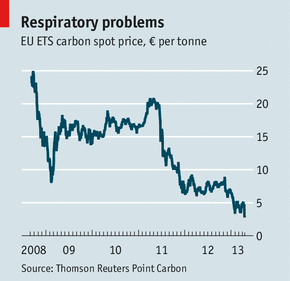CME Group Announces New Futures Contracts for Renewable Identification Numbers (RINs)
NEW YORK, April 25, 2013 /PRNewswire/ -- CME Group, the world's leading and most diverse derivatives marketplace, today announced the launch of nine new futures contracts for Renewable Identification Numbers (RINs). These contracts will be listed with, and subject to, the rules and regulations of NYMEX.
"With the recent increase in volatility in RINs prices, we've seen strong interest from our customers and other market participants for cost-effective ways to manage their risk in this market," said Gary Morsches, Managing Director Global Energy, at CME Group. "As the most actively traded marketplace for the benchmark RBOB Gasoline and ULSD Diesel contracts, our new RINs futures contracts will be a strong complement to our existing suite of products and will allow our customers to take advantage of reduced capital requirements and margin efficiencies."
The new RINs contracts will be available for trading starting May 13, 2013, and will allow customers to hedge risk in three types of renewable fuels:
D4 Biodiesel
D5 Advanced Biofuel
D6 Ethanol
These contracts will be financially-settled based on Argus Media's prices for RINs, which are the most widely-used indexes for this market. They will provide a useful hedge for the price risk associated with the U.S. Environmental Protection Agency's (EPA) renewable fuel standard (RFS2). The EPA has created a credit trading system for compliance with RFS2 for various types of renewable fuels based on units called RINs.
These contracts will be available on the CME Globex electronic trading platform, for over-the-counter (OTC) clearing through CME ClearPort and open outcry on the trading floor in New York, beginning with the May 2013 contract month.
About CME Group
As the world's leading and most diverse derivatives marketplace, CME Group (
www.cmegroup.com) is where the world comes to manage risk. CME Group exchanges offer the widest range of global benchmark products across all major asset classes, including futures and options based on interest rates, equity indexes, foreign exchange, energy, agricultural commodities, metals, weather and real estate. CME Group brings buyers and sellers together through its CME Globex® electronic trading platform and its trading facilities in New York and Chicago. CME Group also operates CME Clearing, one of the world's leading central counterparty clearing providers, which offers clearing and settlement services across asset classes for exchange-traded contracts and over-the-counter derivatives transactions. These products and services ensure that businesses everywhere can substantially mitigate counterparty credit risk.
CME Group is a trademark of CME Group Inc. The Globe Logo, CME, Globex and Chicago Mercantile Exchange are trademarks of Chicago Mercantile Exchange Inc. CBOT and the Chicago Board of Trade are trademarks of the Board of Trade of the City of Chicago, Inc. NYMEX, New York Mercantile Exchange and ClearPort are registered trademarks of New York Mercantile Exchange, Inc. COMEX is a trademark of Commodity Exchange, Inc. KCBOT, KCBT and Kansas City Board of Trade are trademarks of The Board of Trade of Kansas City, Missouri, Inc. All other trademarks are the property of their respective owners. Further information about CME Group (NASDAQ: CME) and its products can be found at
www.cmegroup.com.



